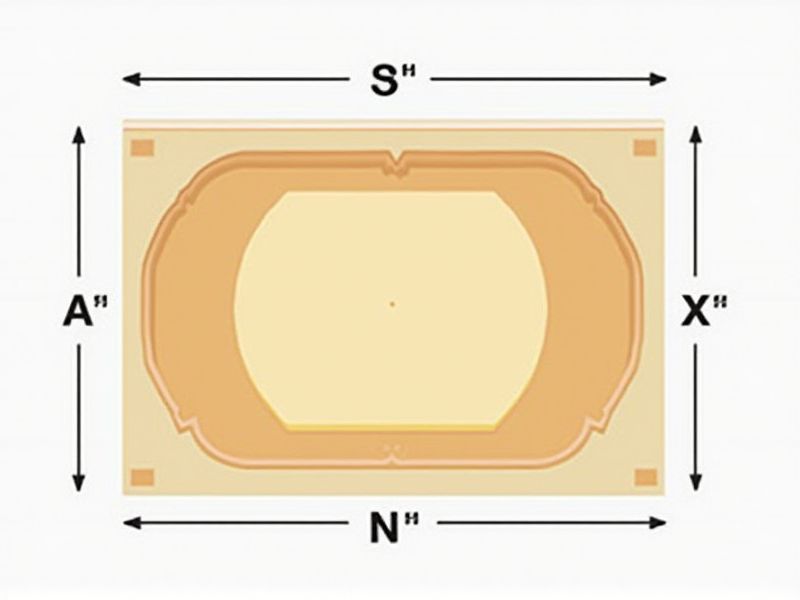
When planning an equestrian arena, it's important to consider standard dimensions to ensure safety and functionality. A commonly used size for a dressage arena is 20 meters by 60 meters (approximately 66 by 197 feet), which is suitable for most competitions. For general riding and jumping, many arenas are constructed at a minimum of 20 meters by 40 meters (about 66 by 131 feet) to provide enough space for various exercises. Always be sure to factor in additional clearance around the perimeter for spectators, equipment, and safe movement of horses and riders.
Regulation Size
A standard equestrian arena typically measures 20 meters by 60 meters, complying with international competition regulations. The arena surface often consists of materials like sand or rubber, ensuring optimal traction and safety for horses. Proper lighting is essential, with a minimum illumination of 200 lux recommended for evening events. Maintaining these specifications enhances the overall experience for both competitors and spectators in equestrian sports.
Dressage Arena Specifics
The standard dimensions of a dressage arena are 20 meters by 60 meters for international competitions, while smaller competitions may utilize a 20 by 40-meter arena. The arena is marked with lettered points along the perimeter, providing clear references for movements and transitions; these letters rotate around the perimeter with "A" at the entrance. Footing material, such as sand or rubber, plays a crucial role, ideally offering a balance between firmness and shock absorption to support both horse and rider. Furthermore, proper lighting ensures visibility, enhancing safety and performance during evening competitions, with a recommended brightness level of at least 200 lux for optimal conditions.
Jumping Arena Dimensions
The standard dimensions for a jumping arena in equestrian competitions typically range from 100 to 120 meters in length and 60 to 80 meters in width. These measurements ensure adequate space for various jumping courses, accommodating multiple horse and rider combinations efficiently. The surface is generally composed of a mixture of sand, fiber, and rubber to provide optimal traction and cushioning. Proper arena maintenance, including regular dragging and watering, is crucial to maintain the ideal footing and improve safety for both horse and rider during practice and competition.
Indoor Vs. Outdoor Variations
Equestrian arenas are primarily categorized into indoor and outdoor types, each offering unique characteristics that cater to various riding disciplines. Indoor arenas typically measure around 20 by 40 meters, providing a controlled environment that is less affected by weather conditions. In contrast, outdoor arenas can vary significantly in size, often exceeding 20 by 60 meters, allowing for larger jumps and more expansive riding experiences. When designing your arena, consider factors such as surface material, lighting, and fencing to optimize performance and safety for both horse and rider.
Surface Considerations
The standard of equestrian arenas prioritizes surface considerations for optimal horse performance and safety. Ideal surfaces typically consist of a blend of sand, fiber, and rubber, providing cushioning and traction while minimizing dust and mud. The recommended arena size is a minimum of 20m x 60m for dressage and 20m x 40m for jumping, ensuring ample space for various disciplines. Regular maintenance, including grading and watering, is crucial to maintain the integrity and consistency of the surface over time.
Safety Margins
The safety margins for equestrian arenas typically recommend a minimum width of 20 meters and a length of 40 meters for a standard arena, ensuring ample space for riders and their horses to perform safely. Maintaining proper footing, such as a mix of sand and fiber, can prevent injuries; recommended depth ranges from 3 to 4 inches. Fencing heights should adhere to at least 1.2 meters to prevent escapes while ensuring visibility for spectators. Regular inspections and maintenance of both the surface and equipment can enhance safety, with annual reviews being ideal for optimal functionality.
Spectator Space
The standard of an equestrian arena emphasizes the spectator space, which is ideally designed to accommodate at least 200 attendees comfortably. Optimal viewing distances recommend a minimum of 30 feet from the arena perimeter, ensuring clear sightlines for all spectators. High-quality seating options, such as bleachers or individual chairs, should provide accessibility and safety, adhering to regulations for public venues. Including amenities like concession stands and restrooms within 200 feet of the spectator area enhances the overall experience for attendees during events.
Entrance And Exit Planning
A well-designed equestrian arena emphasizes strategic Entrance and Exit Planning to ensure the safety and efficiency of both riders and horses. Standard dimensions for entrances should be a minimum of 12 feet wide to accommodate larger horse trailers and ensure easy access. Exit pathways are often preferred to be at least 10 feet in width, promoting smooth transitions and minimizing congestion during events. By prioritizing these specifications, you can enhance the overall functionality of your equestrian facility while maintaining a focus on safety and organization.
Drainage Systems
Effective drainage systems in equestrian arenas are crucial for maintaining optimal footing and ensuring rider and horse safety. Studies indicate that a properly designed drainage system can remove 50% more rainwater than an arena without one, significantly enhancing usability during wet conditions. A slope of 1-2% towards designated drainage areas allows for efficient water runoff, preventing puddle formation and surface damage. Regular maintenance and inspections of these systems can extend the life of your arena by at least 20%, ensuring a consistent and high-quality riding experience.
Fencing And Barriers
Equestrian arenas require stringent standards regarding fencing and barriers to ensure safety and functionality. Typically, the height of the fencing should be between 1.2 to 1.5 meters, constructed from durable materials like wood or vinyl. Barriers must provide clear visibility for both riders and horses, often featuring a solid base with an open-top design to reduce visual obstructions. Proper maintenance of these structures is vital, with regular inspections and repairs recommended every six months to enhance safety and compliance.
